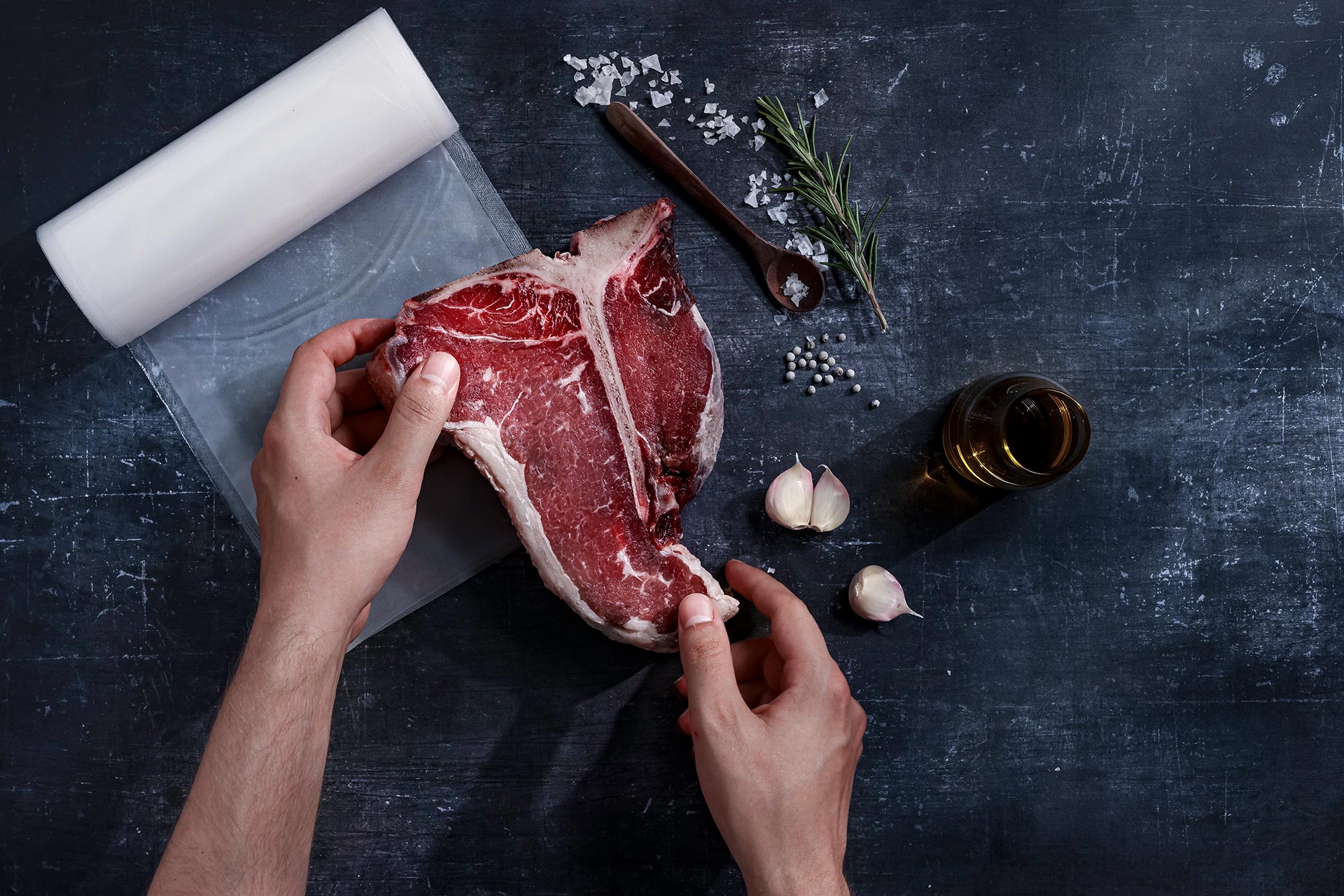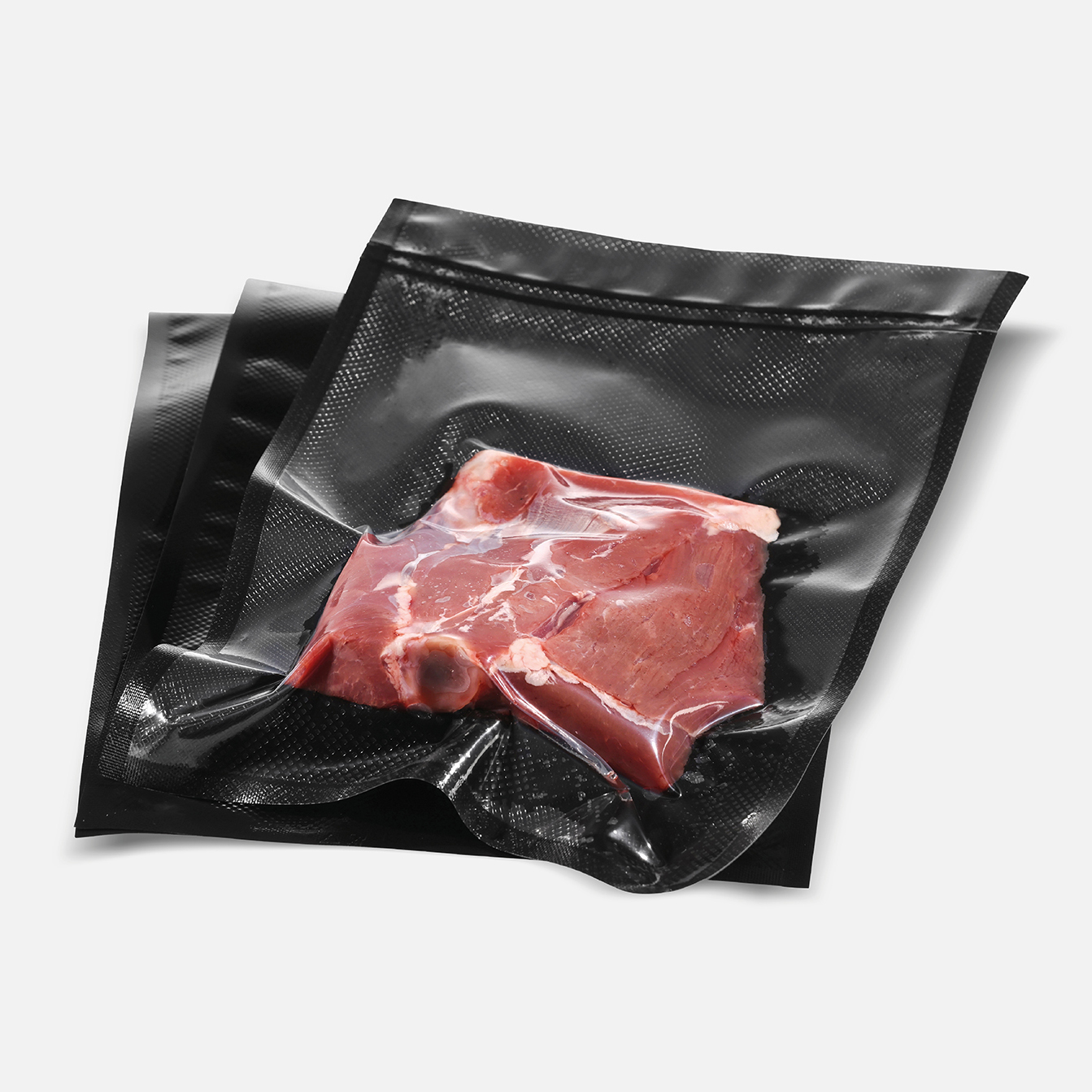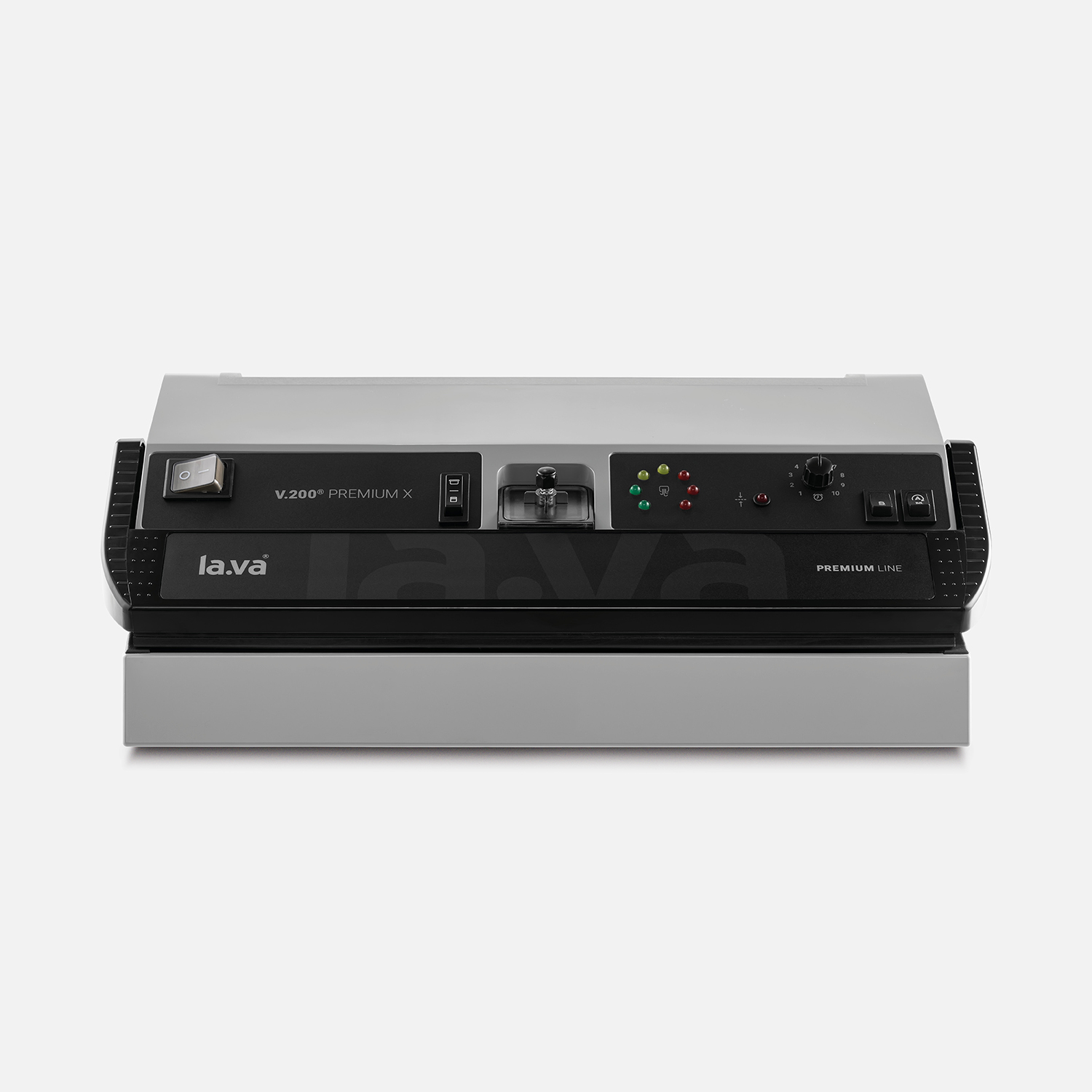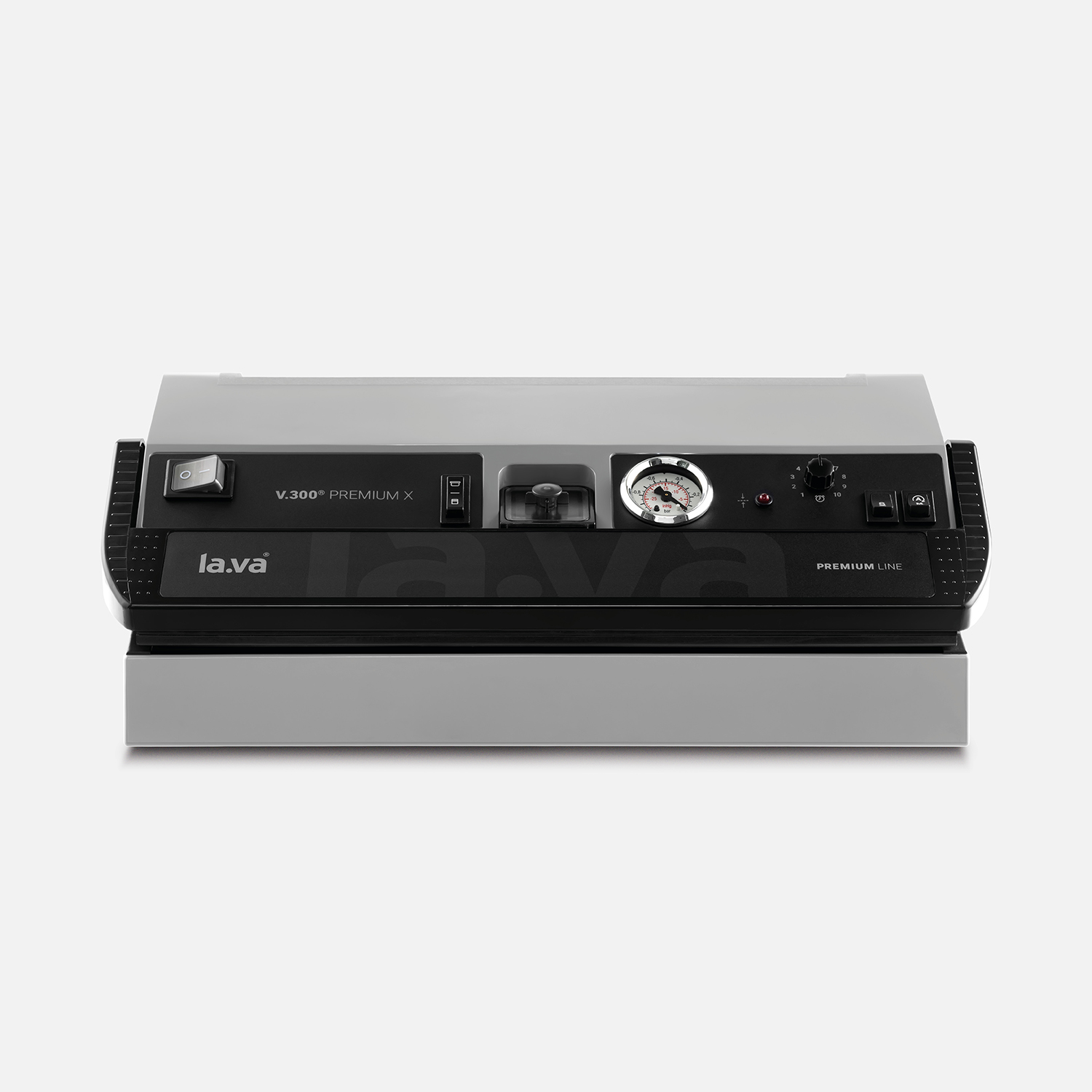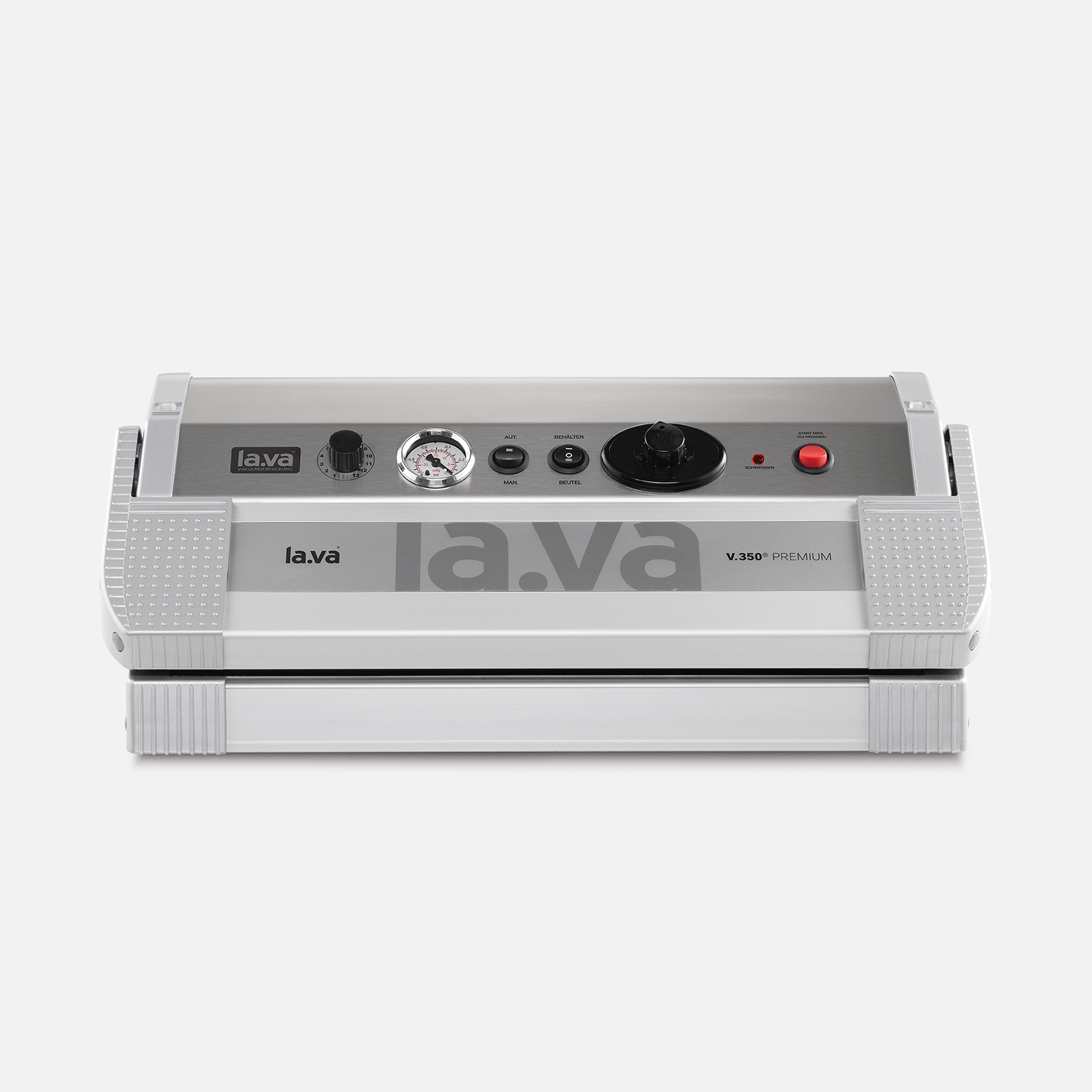You want to vacuum seal your high quality venison, beef or other types of dark meat and then let it mature in a vacuum bag? You will be amazed at how tender the meat tastes afterwards. At Lava, we’ll show you what the term “allow to mature" really means.
Game or dark meat in general should first be cooled in a game fridge, usually by a butcher, at a maximum of +7 °C, either in its skin or protected by fat as prescribed by law. For roe deer, Lava recommends +2 to +3 °C for up to 8 days and for wild boar +1 to +2 °C for up to 6 days. Electronic temperature control is recommended to avoid temperature fluctuations. In general, it should be noted that these specifications can also vary depending on age and condition.
After butchering, the individual cuts are vacuum-sealed and refrigerated again to maintain a core temperature of no more than +3 °C. The basic prerequisite for maturation under vacuum is working very hygienically so that the surface germ content remains as low as possible.
Meat containing softpoint bullets, butchered too late (more than approx. 1 to 1.5 hours after killing), meat from hunting (for example, meat collected long after the hunt) or meat from rutting males is not suitable for vacuum maturation to a great extent. The reason for this is that these pieces only have a low muscle glycogen content, which causes insufficient meat maturation and an insufficient drop in the pH value in the muscles. Venison of such pieces spoils quite quickly in the vacuum packaging, but this is immediately noticeable upon opening by the smell and a greasy surface of the meat.
When butchering and vacuuming, make sure that you are working with latex gloves and that all tools are sterile. We recommend always working on a chopping board, ideally made of plastic or a sanitised smooth stainless steel surface, and first portioning the meat with a knife and gloves. Then fill the prepared vacuum bags, this way, all you need to do when sealing the bags subsequently is ensure that you have clean hands.
Aging meat in vacuum bags, so called wet aging, depends in principle on the age of the meat, the amount of muscle glycogen present, as well as the temperature and time. The lower the temperature, the longer the meat needs to age. We recommend a temperature between 2 and +3 °C for a storage of two weeks and 0 to +1 °C for a storage of four weeks. Venison or dark meat should not be refrigerated for longer than a maximum of six weeks, then it should be frozen as soon as possible.
Wet aging in a vacuum bag guarantees particularly tender meat, but can also result in a slightly metallic taste from time to time, which usually disappears after cooking. When wet aging is used, there is virtually no drip loss, resulting in no weight loss if the meat is sold further.
For an even higher level of refinement, especially for cuts of meat intended for grilling, we recommend the process known as dry aging described below. Special membrane vacuum bags are used, which attach to the surface of the meat and are permeable to water vapour on one side.
Have you ever tried dry aged beef in a restaurant, but found the bill difficult to digest? Now you can dry age perfect prime meat from the comfort of your own home.
It’s easier than you think! You will need: Lava vacuum sealer, Lava dry aging bags and a fridge that can be set as accurately as possible, and last but not least a little patience. In contrast to the wet aging process explained above, dry aging follows a different principle. Connoisseurs appreciate this way of producing fine meat as the often slightly metallic taste of wet aging is completely removed here.
As the word "aging" suggests, preparing meat in this delicious way involves the factor "time". This very sensitive process, which shrinks the total weight of the meat by up to 20 %, takes place in a highly complex Lava aging bag which has had the air removed via a vacuuming device beforehand.
This concentrates the ingredients and flavours, allowing a complex biochemical process to take place. This is made possible by the membrane bags used for "maturing", which allow water vapour to escape but don’t allow air in.
The meat should have a light layer of fat on the outside, such as entrecote, roast beef or even a wild boar backstrap, so as not to have to cut off too much muscle meat afterwards, because the dry outer layer ensures further weight loss after the maturing process. The membrane layer of the aging bag forms a firm bond with the meat after vacuuming. Lava recommends approx. 0 to +3 °C as the ideal refrigerator temperature. This temperature range should never be exceeded.
Make sure that the vacuumed meat is placed on a well ventilated rack. If the refrigerator has glass plates or shelves, a cake rack will also help. Movement is generally good, but not for our exquisite meat, which should remain in the same place during maturation so as not to upset the processes taking place within the meat.
After a maturaturation period of approximately 2 - 3 weeks and the removal of the dry outer layer, the high quality meat underneath is revealed.
For more details about the aging bags and detailed instructions on how to dry age beef, please visit the page dry aging in Lava dry aging bags.

